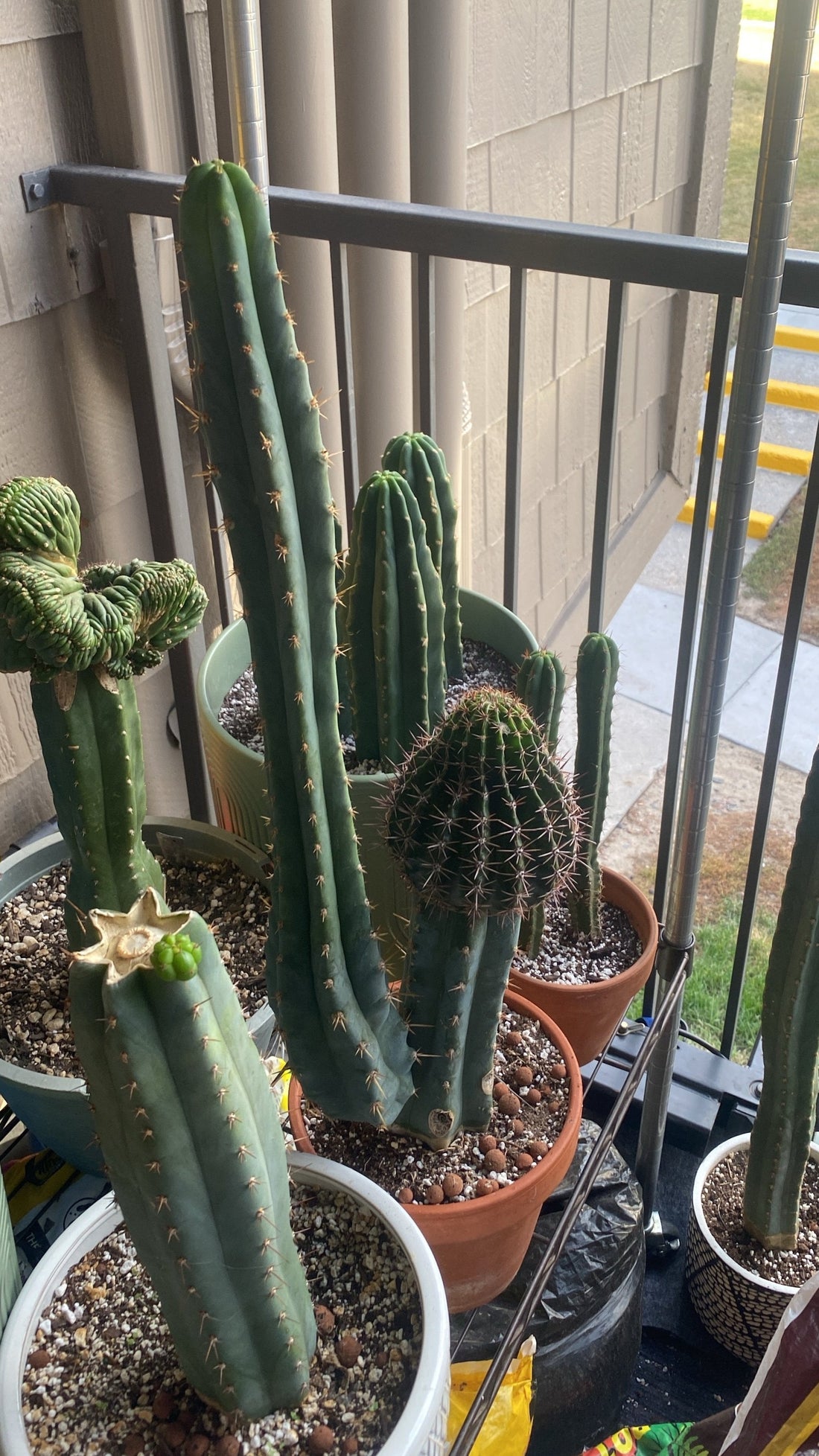
Comprehensive Guide to San Pedro Cactus (Trichocereus species) Care
Share
The San Pedro cactus, primarily known under the genus Trichocereus (recently synonymized with Echinopsis), is a robust and fast-growing columnar cactus native to the Andes Mountains of Peru, Ecuador, Bolivia, and Argentina. This cactus is highly regarded for its resilience, striking appearance, and cultural significance. Whether you are growing it for its aesthetic appeal or its historical uses, proper care is essential to ensure healthy growth and longevity. Here’s a detailed guide to caring for San Pedro cacti:
1. Light Requirements
San Pedro cacti thrive in bright, direct sunlight. Ideally, they should receive at least 6-8 hours of full sun daily. If you’re growing them indoors, place them near a south or west-facing window where they can soak in the maximum amount of light. However, if you’re introducing a cactus to full sun for the first time, do so gradually to prevent sunburn.
2. Watering
Despite their origins in the arid Andes, San Pedro cacti appreciate regular watering during the growing season (spring and summer). However, they are susceptible to root rot if overwatered. Here’s a basic watering schedule:
- Spring and Summer: Water thoroughly when the soil is completely dry, typically every 1-2 weeks. Ensure excess water drains away quickly.
- Fall and Winter: Reduce watering significantly. In colder climates, it’s often best to stop watering entirely during the winter months, especially if the cactus is kept in a cool environment.
3. Soil
A well-draining soil mix is crucial for San Pedro cacti. Use a cactus-specific potting mix or create your own by combining 50% regular potting soil, 25% perlite, and 25% coarse sand. The soil should be slightly acidic to neutral, with a pH of 6-7. You can however use a 50/50 mix of high quality potting soil and perlite
4. Temperature and Humidity
San Pedro cacti prefer temperatures between 60°F and 80°F (15°C - 27°C). They can tolerate brief periods of heat above 90°F (32°C) and even light frost, but prolonged exposure to freezing temperatures can cause damage. If you live in a region with cold winters, consider bringing your cactus indoors during the colder months. These cacti do well in average household humidity levels and do not require additional humidity.
5. Fertilizing
During the growing season, fertilize your San Pedro cactus once a month with a balanced, water-soluble fertilizer diluted to half strength. A fertilizer with an NPK ratio of 10-10-10 or 20-20-20 works well. Avoid fertilizing during the fall and winter months when the cactus enters its dormant phase.
6. Repotting
San Pedro cacti grow relatively quickly and will need repotting every 2-3 years, or when the roots outgrow the current pot. Repotting is best done in the spring, just before the growing season begins. Choose a pot that is slightly larger than the current one, and ensure it has adequate drainage holes.
7. Pests and Diseases
San Pedro cacti are generally resistant to pests but can occasionally be affected by spider mites, scale, or mealybugs. Inspect your cactus regularly for signs of these pests, such as discolored or deformed areas, and treat with neem oil or insecticidal soap if necessary. Root rot, caused by overwatering, is the most common disease. To prevent this, always ensure your cactus is planted in well-draining soil and only water when the soil is dry.
8. Propagation
San Pedro cacti can be easily propagated from cuttings. To do this:
- Use a clean, sharp knife to cut a healthy section from the cactus.
- Allow the cutting to dry and callous over for 1-2 weeks in a shaded area.
- Once calloused, plant the cutting in well-draining soil and water sparingly until roots develop.
9. Cultural Significance and Ethical Considerations
San Pedro cacti have been used for centuries in Andean traditional medicine and spiritual practices. If growing San Pedro for any purpose beyond ornamental use, be aware of the ethical and legal considerations associated with its psychoactive properties, especially since the cactus contains mescaline, a controlled substance in many countries.
Conclusion
The San Pedro cactus is a remarkable plant, both for its striking appearance and its rich cultural heritage. With the proper care, these resilient cacti can thrive for decades, becoming a cherished part of your garden or indoor plant collection. Remember to respect the plant’s needs for sunlight, proper watering, and well-draining soil, and you’ll be rewarded with a healthy, thriving cactus that brings a touch of the Andes into your home.
This guide provides a holistic overview of San Pedro cactus care, ensuring that even those new to cacti can successfully grow and maintain these remarkable plants.
